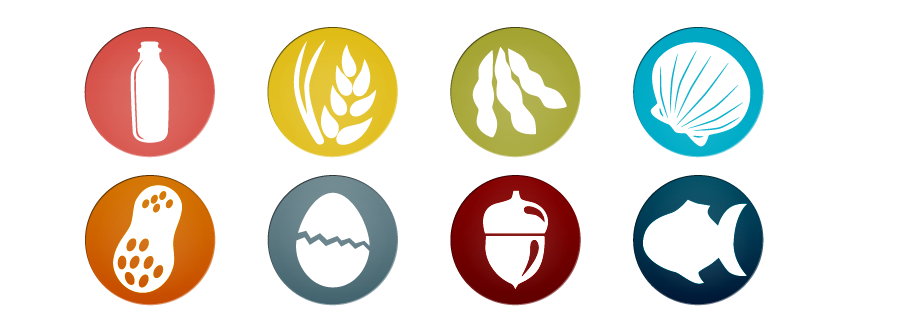Food allergy training could be the difference between life or death for one of your patrons. There is a big difference between food items to which people are intolerant, such as gluten, and items that result in an allergic reaction:
- A person with a gluten intolerance may experience mild to extreme discomfort and would unlikely be in a life threatening situation.
- A person with an allergy has a more severe reaction. It may require someone to get medical attention – and in some cases, hospitalization.
The top eight food allergens—milk, eggs, peanuts, tree nuts, wheat, soy, fish and shellfish—account for 90 percent of all allergic reactions.
Food Allergy Training is designed to assist owners, supervisors, and workers in any food service business to gain knowledge about food allergens, and to develop best practice procedures for making food safe for customers with allergies.



It is estimated that some 15 million Americans have food allergies, according to Food Allergy Research & Education (FARE). With the number of people with food allergies and the number of recalls due to undeclared allergens increasing, food allergy training is an important component of any food service operation.
Food Allergy Training Course Info
Food Allergy Training Course Description
The Food Allergy Training course will discuss what is a food allergy, the different types of food allergens, how to identify symptoms of a food allergic reaction and what to do if a food allergic reaction occurs in a restaurant food service environment.
The course will also cover the best practices for serving a food allergic customer including: the role of management, how to properly prepare an allergen safe meal for a food allergic customer, the front of the house and back of the house responsibilities.
Audience: Owners, managers, supervisors, food servers, chefs, cooks, mobile food vendors, bartenders, host/hostesses that handle food, bussers, caterers, and wait staff.
Credit Hours: 1 hr
Learning Objectives:
Upon completion of this course, student will be able to:
- Define a food allergy, including the top 8 food allergens and sources of each.
- Recognize the difference between a food allergy and food intolerance.
- Identify symptoms of a food allergic reaction.
- Describe the protocol for notifying emergency response if a food allergic reaction occurs.
- Discuss best practices for serving a food allergic customer, including the role of management, front of the house and back of the house employees.
- Describe how to properly prepare an allergen safe meal for a food allergic customer.
- Analyze a case study on how to properly serve a food allergic guest.
Course Topics:
Lesson 1: Overview of Food Allergens
Lesson 2: Allergy vs. Food Intolerance
Lesson 3: The Top 8 Allergens
Lesson 4: Importance of Allergen Control Plans in Commercial Food Service
Lesson 5: Recognizing Symptoms of an Allergic Reaction
Lesson 6: Facility Management: Handling Food Safely for Allergen Guests
Lesson 7: Communicating in a Restaurant: Management, FOH, BOH, and Service Staff
Lesson 8: Allergic Scenario: Customer Interaction
End of Course Test – Print Your Training Certificate
As soon as you complete the Food Allergy Training Course – you will then be required to take the End of Course Test.
With a minimum passing score of 70% on the test, you will be able to download and print your certificate of completion.
Individuals who do not pass the test on the first attempt will be allowed one additional attempt to review the course content and pass the test.
Course Summary



- Course Duration: 1 hr
- All States
- Take course anywhere and anytime!
- Download certificate upon completion!
- 24×7 Support: (877) 881-2235 – Online
- 10% OFF SALE – Promo Code: “train10off”
Food Allergy Training
Price: $15.00
Save Big with Group Rates
Get huge discounts by enrolling and training all your employees. Enjoy tailored corporate solutions and training services – a free cloud-based LMS and even consulting services. Track progress, generate reports, and manage learners online. More Info


